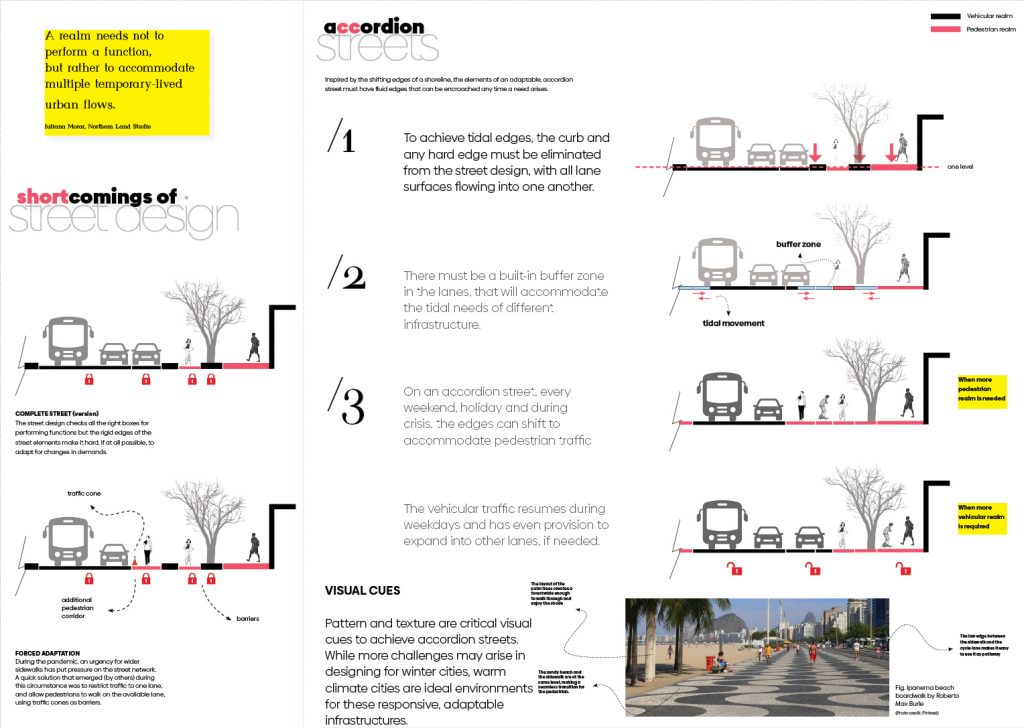Accordion Streets
Iuliana Morar
What if street elements could have tidal edges, expanding and shrinking in response to our needs?
The state of crisis, in its different forms (wildfires, pandemic, flooding) has highlighted infrastructure shortcomings that otherwise, while still obvious, could not reach the tipping point of urgency, remaining perpetually unresolved.
A typical “Complete street”, is designed to accommodate pedestrian and vehicular movement, while at the same time supporting micro-mobility through dedicated lanes. While technically, the functions we want a street to perform are entirely met, our needs for these functions are not always the same and the rigid street design comes short to adapt to these changes in priorities. The pandemic has made the need for more sidewalk space stringent. However, the same need exists every evening, weekend and holiday, when more people have time and enjoy outdoors. This repetitive, cyclic even, behaviour of street usage reveals the urgency for a street design that can adapt to accommodate our ever-changing needs, as they come. It is time to acknowledge and accept that our priorities are fluid and that the way we design and build infrastructures must evolve to become responsive. While faced with the need for more pedestrian realm the obvious reaction might be to widen the sidewalks, it is an erroneous approach. Instead, we must design for Change, imagining adaptive structures capable to accommodate any change may arrive.
Same as a shoreline accommodates the tidal movements of the sea, giving and taking away the land in a perpetual, cyclic negotiation, what if a street could have tidal edges reclaiming and releasing pedestrian realm?
